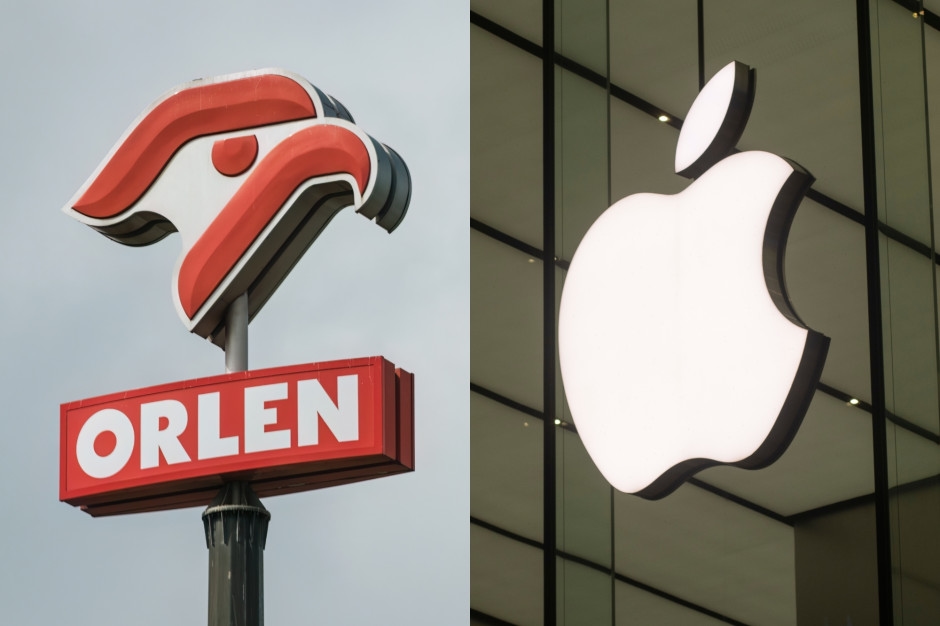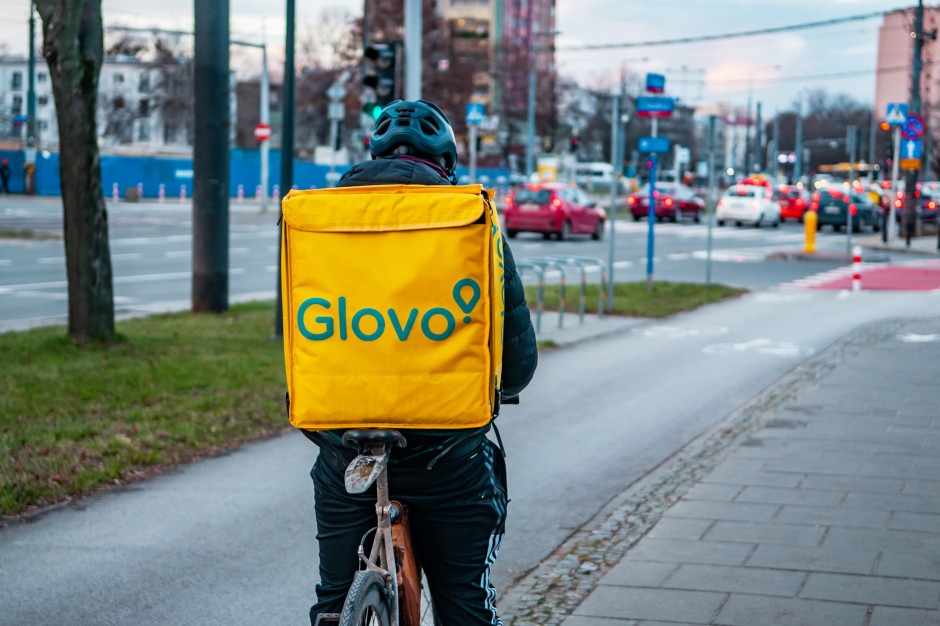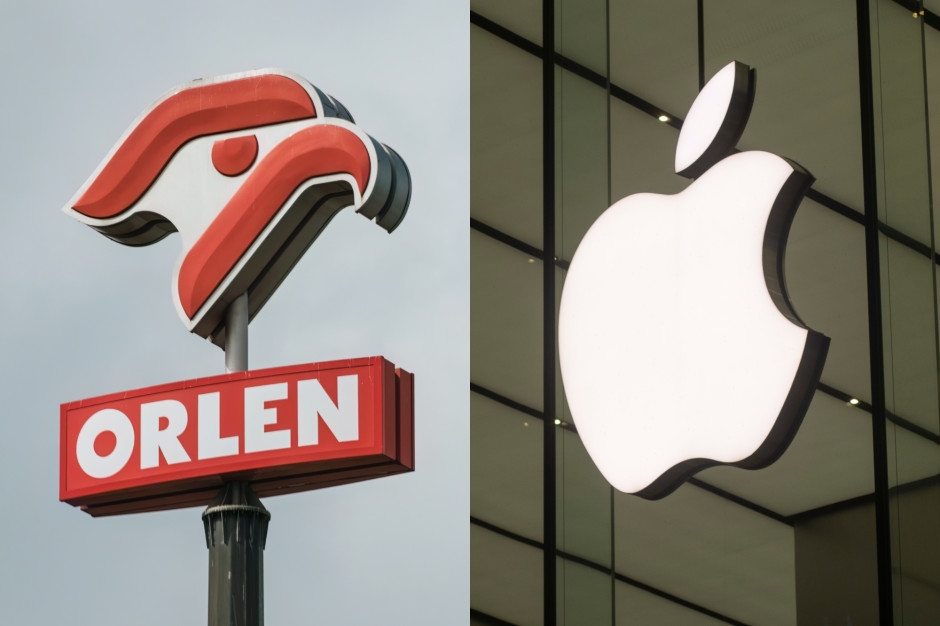Orlen and Apple Break Valuation Records. The Polish Giant Is Worth a Fortune

- Orlen became the first Polish company in history to be worth over PLN 110 billion, surpassing PKO BP. Not only did Orlen's share price rise, but Apple's as well. The American giant's shares broke an all-time high for the first time this year, reaching a value of USD 3.89 trillion (a 3.9% increase).
- The European Union summit agreed to revise the implementation framework for the ETS2 system, which has raised concerns about inflation, paving the way for its entry into force to be potentially blocked or postponed from 2027.
- Poland's GDP is expected to accelerate to 3.9% in the third quarter (the best result in three years) as a result of better-than-expected data on growth in industrial and construction production and retail sales.
We started the week with interesting data from the Chinese economy. It grew by 4.8% in the third quarter of 2025. This is the worst result in a year, although analysts expected an even lower reading. At the same time, there were strong industrial production figures and disappointing retail sales figures. The conclusions from the data are clear: China continues to suffer from weak domestic demand, and its GDP is being dragged down by exports. According to Ning Zhang, chief China specialist at UBS, the government in Beijing should implement new measures to stimulate growth based on these figures. Otherwise, achieving the planned GDP growth this year may prove impossible.
Pressure is mounting on Brussels in Europe to postpone the introduction of the ETS2 system. This is currently planned for 2027, and the postponement would mean that the new regulations would come into effect in 2030. Among those interested in such a change is Poland, which could lose a lot. You can read about what ETS2 is and why it's not in our best interests in Monday's summary: "The Chinese economy is weakening. GDP is growing at its slowest rate in a year [HIRSCH ON THE ECONOMY] ."
Another topic discussed was the impact of a potential cessation of hostilities in Ukraine . If an agreement were reached (which doesn't seem likely at the moment), economists at Citigroup predict that the price of a barrel of Brent crude oil would fall to $50, down from over $60 currently. This would be the lowest level since the pandemic. You can read about why this would happen in the text under discussion.
Another topic covered in Monday's summary is a statistical curiosity about houses and apartments in Poland. These are estimated to be worth PLN 7.8 trillion. Our GDP is approximately PLN 4 trillion, so the value of our real estate significantly exceeds the annual production of all goods and services in our economy. In 2024 alone, their value increased by PLN 600 billion. This increase was the result of both the construction of 200,000 new apartments and the rising prices of existing ones.
The end of stagnation in Polish industry?We started Tuesday with a positive note from the Polish economy. Industrial production was 7.4% higher year-on-year in September . There are growing indications that after three years of stagnation, Polish industry is back on the path to growth. The upcoming readings will certainly be closely watched by economists, as they will answer the question: is this a one-off spike or the beginning of a new growth trend? You can read more details about the latest reading in Tuesday's analysis: Industrial production in Poland is growing at the fastest rate in a year and a half [HIRSCH ON THE ECONOMY] .
Further interesting conclusions emerge from the analysis of demand for retail bonds. Despite selling PLN 5.9 billion worth of retail bonds in August, the Ministry of Finance raised only PLN 1.9 billion in new capital – the lowest amount since April 2024. The remaining purchases (PLN 4 billion) were financed through "leapfrogs" (early exchange of old bonds for new, often higher-interest bonds) and "rollovers." The state's debt from bond issues increased by PLN 1.9 billion, and the total State Treasury debt increased by PLN 20.6 billion in August.
Another topic discussed was PGZ's assistance to JSW. Last week, more details on this matter emerged. Minister Balczun stated that PGZ would not be an investor in JSW, which caused the company's shares to rise . Instead of providing capital bailouts, JSW will be integrated into the supply chain for the Częstochowa Steelworks as a supplier of coking coal, becoming a stable customer. The minister emphasized that this is a key element of national security.
Not only JSW's share price rose, but Apple's as well. The American giant's shares broke an all-time high for the first time this year, reaching $3.89 trillion (up 3.9%) , surpassing Microsoft. However, Apple is still second behind NVidia ($4.46 trillion). The growth is fueled by analysts' improved recommendations, after the iPhone 17 sold 14% more than its predecessor. Year-to-date, Apple (up 4.7%) has lagged behind competitors like NVidia and Alphabet (over 30%).
The government has a plan for the record deficit - will new taxes and fees save the budget?Wednesday began with a new idea from the European Commission. The EC has proposed lowering electricity taxes, part of broader price-mitigation initiatives. The EC wants to lower the EU's minimum framework for VAT and excise tax rates, which will allow member states to reduce them. Currently, taxes account for nearly one-third of the cost of electricity. In Poland, VAT (23%) and excise tax (PLN 5/MWh) are higher than the EU minimum. You can read about Brussels' other plans in the article " European Commission Wants Lower Electricity Taxes [HIRSCH ON THE ECONOMY] ."
Electricity prices are not just about taxes, but also the price of electricity on the market. Meanwhile, the average energy price in Q3 increased by 2.2% in intra-group transactions (to PLN 456.69/MWh). This is the first such increase in a year. A similar increase (+2.1%) was recorded on the Polish Power Exchange (TGE) (to PLN 421.7/MWh for contracts for 2026). These increases do not guarantee that after the URE tariffs for 2026 are unfrozen, they will fall below the current freeze level (PLN 500/MWh).
Let's stick with Poland, where the government plans to raise the VAT on non-alcoholic beer and energy drinks with juices from 5% and 8% to 23%. The change (scheduled for July 1, 2026) is expected to increase budget revenue by PLN 435 million. This is one of 17 tax increases proposed as part of efforts to reduce the excessive deficit (a document for Brussels), which lacks any proposals for spending cuts. Other major items include higher corporate income tax (CIT) for banks (PLN 6.6 billion) and higher road tolls for trucks (PLN 2.8 billion).
The price of gold suffered a spectacular 8% decline on Tuesday, losing 8.6% since Monday's peak. Silver followed suit, falling 12.9% since Friday. The decline followed gold's exceptional 25.5% gain since September. While fundamentals (the prospect of lower US interest rates, Trump's political risk, and central bank diversification, including the National Bank of Poland (NBP) to 30% reserves) suggest a long-term upward trend, the recent decline may have been triggered by profit-taking following a speculative rally.
Let's return to the topic of industrial production discussed on Monday. Following the strong industrial results, construction production also began to grow, recording a minimal increase of 0.2% year-on-year (significantly better than the -7% recorded a month earlier). This potentially indicates increased investment and faster GDP growth in the third quarter, particularly thanks to EU funds and growth in specialized work. More estimates are expected following today's release of retail sales data from the Central Statistical Office (GUS).
More US sanctions and a record valuation for OrlenThursday began with US sanctions imposed on Russian energy producers. The United States imposed new, unprecedented sanctions on Russia's largest oil producers, Rosneft and Lukoil, and called on Russia to engage in the peace process in Ukraine. The restrictions block assets and prohibit all transactions with American entities, and also threaten secondary sanctions against foreign financial institutions servicing these companies. The sanctions are intended to curb Kremlin financing of war operations and force discounts on oil sales. In response, the price of Brent crude oil rose by 2.7% and diesel by 3%.
Let's stick with the topic of oil companies, as Orlen has become the first Polish company in history worth over PLN 110 billion. The increase in valuation was due to an increase in the number of shares issued following acquisitions (Energa, Lotos, PGNiG). This overtook PKO BP (the previous record of PLN 107.5 billion as of August 13th) and became the most valuable company on the stock exchange. Acquisitions are not the only reason for the record valuation. You can read more in the article " Orlen is the first company in Poland worth over PLN 110 billion [HIRSCH ON THE ECONOMY] ."
Orlen's record valuation isn't the only good news. Retail sales in Poland rose 6.4% year-on-year in September, the best result since April, though slightly below expectations. Following this and earlier production data, economists believe GDP growth will accelerate to 3.9% in the third quarter. This would be the best performance for the Polish economy in three years (Q3 2022).
Continuing with the stock market, it's worth mentioning that Smyk, the market leader in children's products (14.3% share), went public on Thursday. The initial price was PLN 13 per share, valuing the company at PLN 857 million, and the offering valued at PLN 416.6 million (obtaining approximately PLN 150 million for debt repayment). The current owner will retain a controlling stake. Symek's annual revenues are PLN 2.25 billion, but growth is slowing (+0.5% in the first half of the year). The company (253 stores in Poland) is seasonal, recording losses in the first half of the year. The company plans to pay dividends (30-50% of profit) starting in 2027. The IPO is expected on November 7th.
The statistical highlight of the day was the rising value of cash in circulation. It rose by PLN 11.9 billion in September (the largest increase since March 2022), reaching a total of PLN 442 billion . At the same time, the National Bank of Poland (NBP) report shows that the value of deposits exceeded PLN 1.5 trillion, with household deposits breaking records (over PLN 400 billion), despite falling interest rates. The total money supply increased to PLN 2.643 trillion.
Will ETS2 be delayed? That would be good news for Poland.We started the last day of the week with important news from Brussels. The EU leaders' summit agreed to revise the ETS2 implementation framework, which is to cover transport and construction (raising concerns about rising prices and inflation, including in Poland). Prime Minister Tusk believes that the term "revision" paves the way for blocking or postponing the ETS2's entry into force (currently planned for 2027). The European Commission must now propose changes.
This was good news from Brussels. The bad news (at least from the Polish perspective) is that the EU summit failed on the issue of using Russian reserves (mostly held in Euroclear in Belgium) for Ukraine , as Belgium blocked the decision, demanding greater guarantees of joint and several legal and retaliatory risk sharing. The European Commission is expected to prepare options so that a decision can be made in December. You can read more about this topic in the article " Use of Russian reserves for Ukraine blocked [HIRSCH ON THE ECONOMY] ."
Another interesting statistic is a new CBOS survey. It shows that only 4% of Poles rent, while a staggering 71% live in their own property (house or apartment). For most people, rising property prices are beneficial, increasing the value of their assets. A staggering 78% of Poles are satisfied with their living conditions (a 7 percentage point increase from 2022), which calls into question the narrative of a "housing crisis." The average apartment size is 100 square meters.
The last interesting data we discussed this week concerned Poland's labor force. Poland has the smallest pool of unused labor in the European Union, accounting for 5% of the population (aged 15–74), compared to the EU average of 11.7%. This pool is primarily made up of unemployed people (2.8%) and those who can work but are not looking for work (1.1%). Although Poland has led the way in this category for the third year in a row, the current level of 5% marks the first increase in this percentage since 2013.
What will the next week bring?On Monday, October 27, 2025, attention will focus on sentiment in Europe: the German Ifo Index (forecast 87.7) and data on the M3 money supply in the Eurozone will be released. BUDIMEX will publish its quarterly report on the Warsaw Stock Exchange.
On Tuesday, the German Consumer Confidence Index (GfK) and the Polish Leading Economic Climate Index (BIEC) will be released. ŻABKA will report its quarterly results. Visa and UPS, among others, will present reports on Wall Street.
On the third day of the week, we'll be tracking preliminary third-quarter GDP data from Spain and Sweden, as well as the Polish Labor Market Index. In the evening, tech giants Alphabet (Google) and Microsoft will release their financial results.
On Thursday, the ECB's interest rate decision (expected to hold rates) and preliminary third-quarter GDP readings from the US (forecast 3.8%) and the Eurozone will be key. Banks INGBSK and PEKAO, as well as giants Apple and Amazon.com, will present their quarterly reports.
We'll close the week with the release of preliminary CPI inflation from Poland (forecast at 2.9% year-on-year) and preliminary HICP inflation from the Eurozone. An important report on American spending and income will arrive from the US.
wnp.pl





